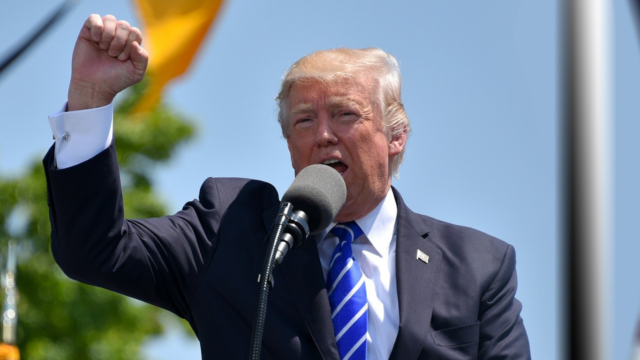President Donald Trump has announced a sweeping set of tariffs on Canada, Mexico, and China, marking a major shift in U.S. trade policy.
The new measures, signed Saturday at Trump’s Mar-a-Lago resort, include a 25% tariff on most Canadian imports and a 10% tariff on Canadian energy products, a move that is expected to have significant economic repercussions on both sides of the border.
The Trump administration cited efforts to curb the flow of fentanyl and undocumented immigration as the primary rationale for the new tariffs. However, administration officials provided no clear benchmarks for when the tariffs would be lifted, other than stating they would remain in place until those issues were resolved.
The announcement marks a departure from the duty-free trade that Canada and the U.S. have largely enjoyed under the United States-Mexico-Canada Agreement (USMCA). Canada remains one of the United States’ most significant trade partners, with $377 billion worth of goods exported to the U.S. last year, according to Commerce Department data.
In return, the U.S. exported $322 billion worth of goods to Canada in 2023, making it America’s largest export market.
The tariffs threaten to disrupt these trade flows, potentially increasing costs for American businesses and consumers.
One of the most notable carve-outs in the tariff plan is the 10% duty on Canadian energy products, including oil and natural gas. Canadian energy exports are a crucial source of fuel for the U.S., particularly in regions that rely on Canadian crude for gasoline production and home heating.
Experts warn that this tariff could drive up prices at the pump and increase heating costs for American households.
The Canadian government has yet to formally respond to the announcement, but economic analysts suggest that retaliatory tariffs could be a possibility.
Under the USMCA, both nations have mechanisms to address trade disputes, and Canadian officials have previously taken action in response to U.S. trade policies affecting key industries. Industry leaders in Canada and the U.S. have expressed concern over the potential impact on manufacturing, agriculture, and the energy sector.
Many Canadian goods, from automobile parts to food products, are deeply integrated into U.S. supply chains.
The tariffs could lead to increased production costs, supply shortages, and job losses in sectors reliant on cross-border trade.
The new tariffs are expected to widen trade tensions between the two countries, with uncertainty surrounding how long they will remain in effect. Some U.S. business groups and lawmakers have already voiced opposition, warning of economic fallout that could affect consumer prices, industry competitiveness, and job security.
With Canada being the United States’ largest export market and a key supplier of essential goods, the consequences of this policy shift are likely to unfold in the coming months.
For now, businesses and consumers on both sides of the border are bracing for potential price increases and economic disruption.


































